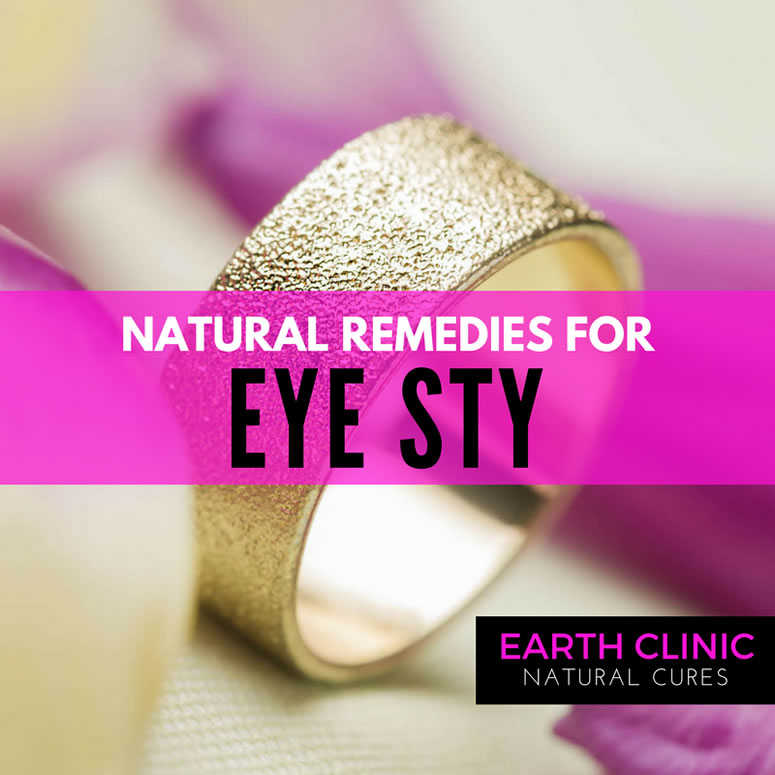
A stye is a painful swelling and redness on the eyelid caused by an infection in the eyelash hair follicle or oil gland of the eye. Staphylococcus bacteria are commonly responsible for styes, although other bacteria can also cause eye infections. Styes usually heal on their own within ten days, but natural remedies can help speed up the healing process, often providing relief in 24 hours or less, particularly when treatment begins at the first sign of symptoms.
Home Treatments for a Sty
Explore the following 10 home treatments for styes that utilize natural remedies to provide relief and expedite the healing process.
1. Chamomile Tea
Known for its infection-fighting, anti-inflammatory, and pain-relieving properties, chamomile tea bags can be moistened and applied to the affected area for 15 minutes, several times a day. If you are allergic to ragweed, avoid chamomile.
2. Green Tea
Green tea bags can reduce inflammation due to the tannins they contain. Apply a moistened tea bag to the stye for 15 minutes, several times daily.
3. Black Tea
Similar to green tea, black tea bags can help alleviate pain, inflammation, and infection. Apply for 15 minutes several times a day.
4. Gold Wedding Band
A clean and dry gold wedding band can be gently rubbed on the stye for a few minutes a couple of times each day. This remedy may also work with a sterling silver wedding band but not with silicone bands.
5. Coconut Oil
Cold-pressed coconut oil has anti-infective properties. Apply it to the stye using a clean finger at least twice a day. Cover pillows with a towel when using this remedy at bedtime to avoid staining your bedding. Ensure you use cold-processed coconut oil with a natural coconut scent.
6. Castor Oil
Castor oil has various eye health benefits, including treating cataracts and styes. Use hexane-free, cold processed oil when applying castor oil in or around your eyes.
7. Turmeric
Turmeric reduces inflammation and fights many bacteria, including staph, which is the cause of most styes. Turmeric can be taken internally or applied directly on the eye.
To consume turmeric, mix ½ to 1 teaspoon of turmeric with 3 ounces of whole milk or almond milk, and drink it up to three times a day.
Alternatively, mix 1/8 teaspoon of turmeric with an ounce of water and use it as an eye wash three times a day.
8. Honey
Raw honey is sterile and antibacterial. Apply a few drops of honey to the stye twice daily. It may sting at first, but the sensation will pass quickly.
9. Charcoal
Activated charcoal can draw out infection from the stye while also relieving pain and inflammation.
Mix ½ teaspoon activated charcoal powder with ½ teaspoon ground flaxseed and place the mixture into an empty tea bag. Wet the tea bag and apply it to the closed infected eye. Cover with plastic wrap and secure with a bandanna for overnight use.
Alternatively, prepare charcoal eye drops by mixing ½ teaspoon activated charcoal into 4 ounces of pure water, straining it through a coffee filter, and applying a few drops to the affected eye twice daily.
10. Use Strict Hygiene
Wash all towels that come into contact with your face during stye treatment in hot water with bleach or white vinegar. Wash your hands well after touching your eyes to avoid spreading infection. Do not use someone else’s makeup, and replace your own eye makeup if you experience recurring styes. Regular use of castor oil to remove eye makeup or charcoal eye drops can help prevent recurring styes.
Differences Between Styes, Conjunctivitis, Blepharitis, and Chalazia
Stye vs. Conjunctivitis
A stye is an infection of an oil gland or eyelash hair follicle in the eye, causing swelling and pain. In contrast, conjunctivitis is an inflammation of the conjunctiva (the clear membrane covering the white part of the eye and the inner surface of the eyelid), which can be caused by bacterial or viral infections.
Stye vs. Blepharitis
Blepharitis is an inflammation of the eyelid, not necessarily caused by an infection. It is a more chronic condition compared to a stye and is often associated with allergies or skin conditions like rosacea or dandruff. Some stye treatments, such as castor oil, charcoal poultices, and chamomile tea bags, may also be effective for blepharitis.
Stye vs. Chalazion
While a stye is typically painful, a chalazion is generally not painful. A chalazion tends to be larger than a stye and is located further back on the eyelid. Many stye remedies can also be effective for treating chalazia.
Cautions for Stye Treatment
Avoid using essential oils to treat styes, as they should never be used in or around the eyes due to their potency. If a stye does not respond to natural remedies or appears to worsen, consult a medical professional.
Note: The term “stye” can be spelled as “sty” or “stye,” with the medical term being “hordeolum,” which is Latin for barley.
In conclusion, styes are common eye infections that can cause discomfort, redness, and swelling. While they usually resolve on their own within 10 days, various home treatments can help speed up the healing process and provide relief.
Maintaining strict hygiene and avoiding using essential oils when treating styes is essential. If you experience recurring styes or if a stye worsens and doesn’t respond to natural remedies, consult a medical professional for further guidance. Remember that styes, conjunctivitis, blepharitis, and chalazia are different eye conditions, and it’s crucial to identify the correct issue to ensure appropriate treatment.
Share your natural stye remedies and learn from others’ experiences to expand your knowledge of effective, at-home treatments below!
Related Links:
Effective Natural Remedies for Chalazion
Natural Cures for Blepharitis
Natural Remedies for Conjunctivitis in Dogs and Cats
https://www.earthclinic.com/cures/sty.html

